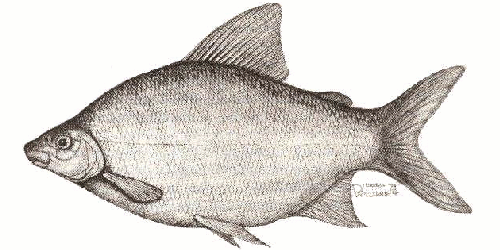 These
are most common in the Zambezi River, but they are occasionally caught
in Lake Kariba more by luck than skill.
These
are most common in the Zambezi River, but they are occasionally caught
in Lake Kariba more by luck than skill.
In the river they tend to congregate behind herds of hippo, or behind
islands and fallen trees, where the current is fairly strong and the food
is washed down to them and gets caught up in the eddies behind the obstacles.
When behind the hippos they are feeding on the worms/insects and
other foods in the hippo dung that floats down.
Quite often when drifting along the river shoals can be seen rising
around the hippo or just cruising along in the river. (What
? Forgot your Polaroid's again ?)
Park either right behind, or next to, the island/tree, or on the
side of the Hippo heard (NOT TOO CLOSE) and cast into the current downstream
with a good sinker, and small hook on a ledger or running sinker rig. The
bites are very quick and they are good at stealing your worms, especially
the small ones, until you get the hang of it.
Many anglers cast out to the side and wait for the bait to "roll"
down till it is behind the boat. You cover more ground but that is useless
if the fish are only behind you.
The fish in Kariba are harder to find (and catch), as they are not
generally in big shoals and are often lone fish or just two or three, swimming
around.
You need to find either gravel banks where there is some roughish
water, or try around herds of hippo that are resident in shallowish water,
more likely in the rivers (Charara and Naodza), where they will hang around
with the other species.
I have heard of a couple of good specimens being caught in front
of I & J in Kariba, and that they have been seen around the Marineland
harbour wall.
They are generally caught on worm on a ledger rig or sliding rig with a couple of worms on a smallish hook.
They are incredibly strong fighters, as can be imagined with that large roundish body, and so some skill is required to catch them.
SMALL TIP
Keep a pair of "Long and thin " Needle nose
pliers handy, (or a box of no 8 or 10 hooks) as they tend to swallow the
hooks, and with their small mouths, the hooks are difficult to get out.
Catch and release with this species is difficult due to this, and
often removing the hook causes them to bleed badly and they then die quite
quickly. So just catch what you need and do not slaughter them for them.